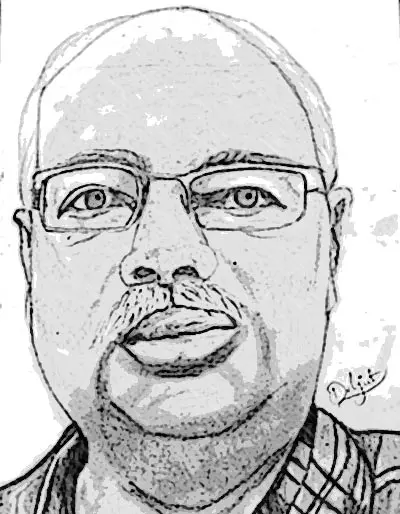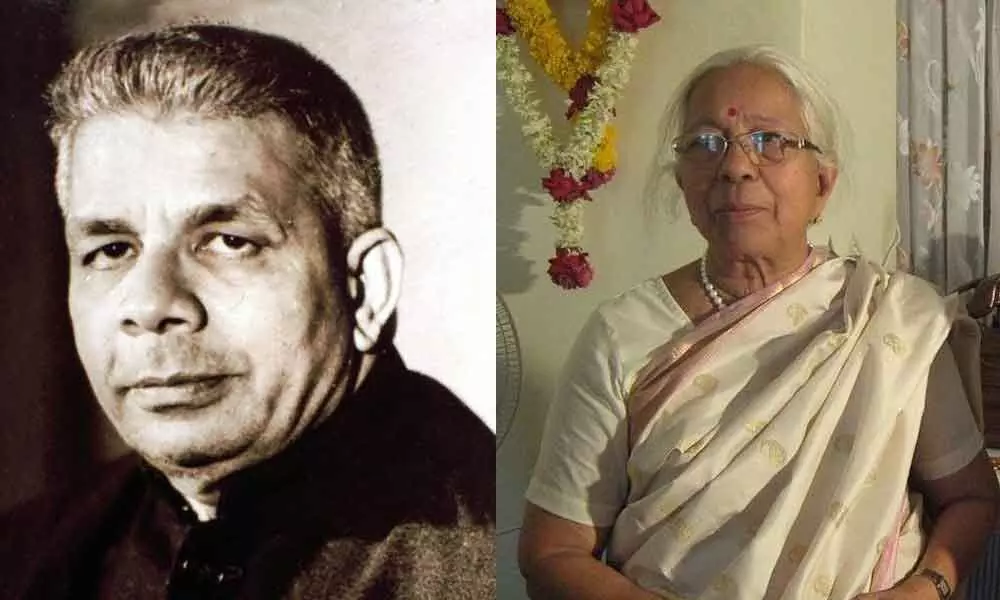Live
- NFR issues notice to 20 GCPA leaders for disrupting railway services
- Bengal school job case: CBI submits third supplementary charge sheet
- Opelka beats Mpetshi Perricard in Brisbane, reaches first final since 2022
- RJD to convene national executive meet in Patna on Jan 18
- ‘Temple’ shirt row continues in Kerala
- Rajnath Singh to present 'chadar' at Ajmer Sharif Dargah on Jan 5
- No Entry to Collectorate Without a Helmet - Collector Badavath Santosh
- Every Pregnant Woman Deserves Safe Motherhood -DMHO Dr. K.V. Swarajyalakshmi
- Human Metapneumovirus (HMPV) Surge in China: Is It Similar to Covid-19?
- Bengaluru Gears Up for Anniversary Show of Classic Motorcycles
Just In
Carrying forward father's legacy in Goa politics


Dayanand Balakrishna Bandodkar,Shashikala Kakodkar
If today Goa happens to be a happening city and one of the best, beautiful and favourite tourist destination in India, for its beautiful beaches, pleasant weather, happening nightlife, delectable seafood, thrilling water activities, and more the credit goes to the first chief minister of Goa Dayanand Balakrishna Bandodkar.
If today Goa happens to be a happening city and one of the best, beautiful and favourite tourist destination in India, for its beautiful beaches, pleasant weather, happening nightlife, delectable seafood, thrilling water activities, and more the credit goes to the first chief minister of Goa Dayanand Balakrishna Bandodkar.
He formed his own Maharashtrawadi Gomantak Party and swept the polls in 1963, 1967 and in 1972 and remained in power until his death in 1973. Popularly known as Bhausaheb Bandodkar, he brought in rapid land reforms and gave top priority to universalisation of Education and thereby laid the foundation for a new Goa. He started building schools and bought about a revolution on the education front. During his period, Goa witnessed all round development in Industry, Tourism, Agriculture, Irrigation, Roads, Bridges and many other spheres.
Even today Bandodkar is remembered for the measures he had taken to help the tenants of agricultural lands and the Mundkars (people who had their dwellings in the properties of others) who cultivated the lands and lived in the houses of landowners without any right to protection of their livelihood or shelter got legal protection from eviction.
He had also promoted performing arts, dance, music and cultural activities. He was also known for patronising art and literature. During his period, literary movements were encouraged, and writers, poets, singers, dancers, sculptors and painters considered him to be a protector of art and culture. He had a rare quality of being a chief minister who was easily accessible to the people and one who would go to the remotest part of the state and freely mingle with the local people. That is why he came to be known as Bhau (elder brother).
He was not only accessible to whoever came to his doorstep but would himself approach his people in the remotest parts of the Territory and mingle with them with abandon. He struck a chord with them like none before him. He became their affectionate elder brother or Bhau and the sobriquet stuck like glue. The fact that he was mine owner and that too a wealthy person never came in his way of being a people's leader.
Though he was given the option of either merging Goa with the Indian state of Maharashtra or retain it as union territory, He supported the merger of Goa with Maharashtra. A referendum was held in 1967 which he lost. The move was ratified in both houses of the Indian Parliament, the Lok Sabha (on 1st December 1966), and the Rajya Sabha (on 7 December 1966). His Maharashtra Gomantak Party swept the polls soon after the referendum. Though opposition and some in his own party felt that he was autocratic in his style of functioning, the people had a different impression. They felt that he had deep concern for the masses and was a leader who worked for their welfare.
Bandodkar died in office in 1973 at the age of 62 and was succeeded by his daughter Shashikala Kakodkar. She went down in the books of history as the first woman chief minister of Goa and third woman chief minister in India. She was preceded by Sucheta Kriplani of Uttar Pradesh and Nandini Satpathy of Odisha. She earned the name of being Tai (Elder Sister) and had a firm grip over the administration.
On the personal front she should be taken as a role model by the present-day politicians. Though she had three sons, they were never allowed to play truant and were brought up like normal children. Inspite of her busy schedule she was perfect mother who served lunch to her children with her own hands. One of the major issues she faced was in 1979 when there was a student's agitation who demanded 50 percent concession in the bus fare. Though initially Shashikala supported the bus owners lobby, after 13 days of student's agitation, she conceded to their demand.
Affectionately called as 'Tai' according to old timers was never vindictive and always respected opposition of some of policies of the government. She is also known for her contribution to take forward the development of Goa and upliftment of Bahujan Samaj.
Proven to be a good administrator, Shashikala's tenure saw landmark legislations such as Town and Country Planning Board, Anti cow slaughter, Anti-gambling Mundkar Act, proposal for Goa University and Archaeology Act, etc.
Her contribution to the Goan politics is endless. Kakodkar followed a different style of functioning which resulted in her downfall. She was educated and had a better capacity to understand and control the administration of the union territory, but she lacked mass contact with the people like her father.

© 2024 Hyderabad Media House Limited/The Hans India. All rights reserved. Powered by hocalwire.com






